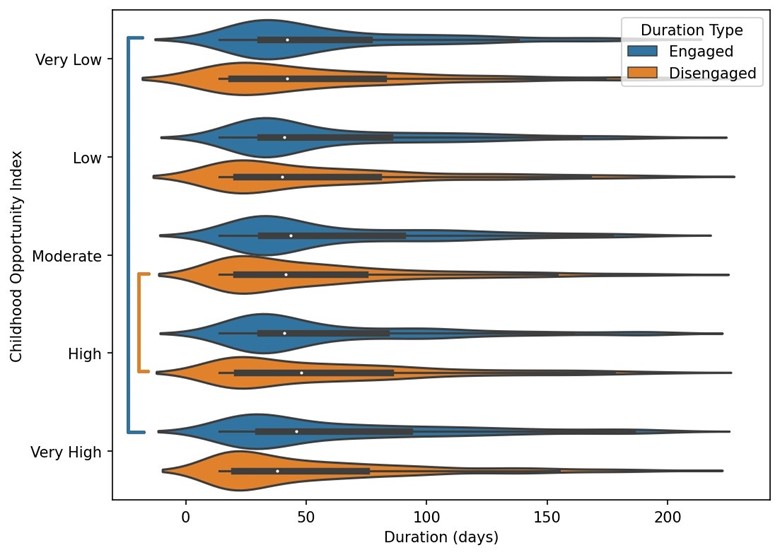Abstract: Bioinformatic Evaluation of Continuous Glucose Monitoring (CGM) Engagement and Disengagement Durations in Relation to the Child Opportunity Index 2.0 in Youth with Type 1 Diabetes (T1D)
Craig Vandervelden1, Kelsey Panfil1, Brent Lockee1, David D. Williams1, Erin M. Tallon1, Anna R. Kahkoska2, Angelica Cristello Sarteau2, Susana R. Patton3, Mark A. Clements1
1Children’s Mercy (Kansas City, MO), 2University of North Carolina at Chapel Hill (Chapel Hill, NC), 3Nemour’s Children's Health, (Jacksonville, FL)
Background and Aims: Consistent engagement with CGM positively impacts glycemic outcomes in youth with T1D, but little is known about how environmental and socioeconomic factors impact CGM disengagement. We therefore evaluated relationships between the Child Opportunity Index 2.0 (COI; a proxy for proximity to quality health, environment, education, and socioeconomic resources) and frequency/duration of CGM disengagement.
Methods: We analyzed electronic health record and CGM data from 1227 youth (T1D >1 year) receiving care from a Midwest USA-based pediatric diabetes clinic network (Jan. 2020 – Sept. 2023). Youths’ addresses were geocoded to census tracts, corresponding to one of five COI levels: Very Low, Low, Moderate, High, and Very High. We defined CGM engagement as ≥14 consecutive wear days (≥25% daily wear time for ≥60% of days in each window) and disengagement as ≥14 consecutive days without CGM. We used two-sample Kolmogorov-Smirnov tests to compare cumulative distributions of duration of CGM engagement and disengagement between COI levels.
Results: In this cohort (median age 14.2[5.6 IQR] years; 50.5% male; 76.6% non-Hispanic White), youth in the Very High vs Very Low COI level experienced longer CGM engagement durations (D=0.11, p<.01; Figure 1). Those in the High vs Moderate COI level experienced longer disengagement durations (D=0.09, p<.04). Yearly rates of disengagement did not differ across COI levels.
Conclusions: CGM engagement and disengagement durations in youth with T1D may be impacted by availability of neighborhood/community resources. Future research should examine COI in advanced, clinically deployable predictive models for disengagement and specific COI components that mediate these relationships.
